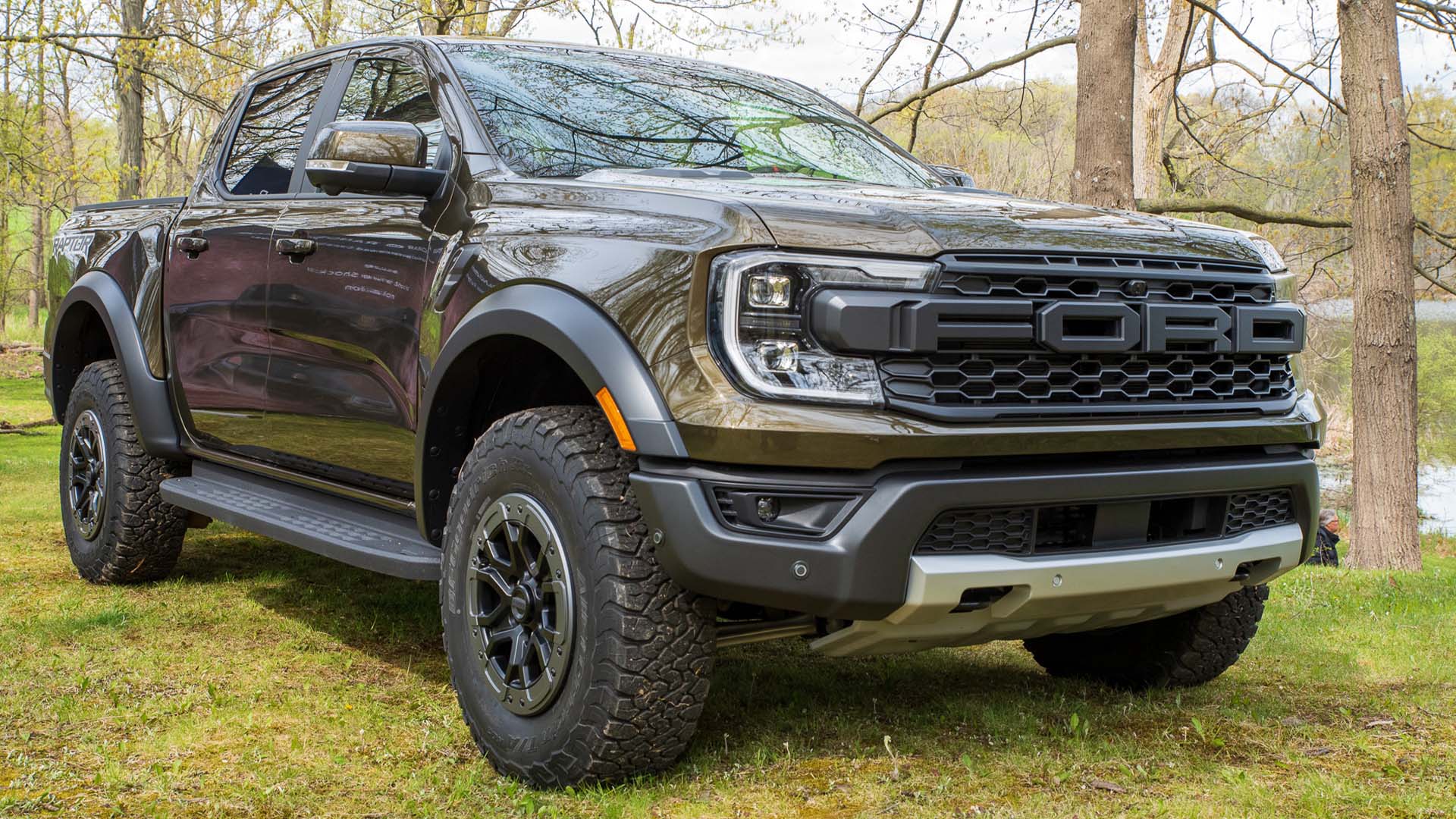

It’s only right that the 2024 Ford Ranger Raptor will finally be sold in the United States after having to wait several long, hard years. Given our undying affection for anything with off-road tires and snazzy suspension, there’s no doubt it’ll be a hit. I not only say that because of the eager demographic it caters to—though that’s part of it—but also because of its technical specs. The topline details are 405 horsepower, 430 pound-feet of torque, and Fox Live Valve shocks as you’d find on the rest of the Raptors.
This isn’t a half-baked off-road trim. It’s a serious shot at the Chevy Colorado ZR2 with even more emphasis on Baja and desert running. The new Ranger Raptor does so with a 95-hp advantage over the Bowtie thanks to its 3.0-liter EcoBoost V6, which sends power to all four wheels via a 10-speed automatic transmission. It has an electronically controlled two-speed transfer case as well as front and rear locking differentials, meaning it can crawl over rocks, too.




All that power is sweet, but it wouldn’t do any good if it weren’t for the Ranger Raptor’s stellar suspension. It may not have Multimatic DSSV dampers like the Colorado ZR2, though that’s not a problem in this case. That’s because Ford carried over the Fox Live Valve shocks from its other Raptor models and fitted them to the next-gen Ranger here. They measure incoming terrain data 500 times per second—about how fast our brains process visual information. Then, they create a predictive model to react accordingly to the terrain as well as your driving behavior. It’s high-tech.
The suspension upgrades don’t stop there, either. The Ranger Raptor features stronger aluminum upper and lower control arms up front; this is different from the Bronco Raptor, which features steel uppers and aluminum lowers. This is done to keep the weight down, and additionally, the Ranger only has to work with 33-inch BF Goodrich KO3s rather than 37s like the Bronco. The rear sports a Watts link setup that promotes better stability than a more traditional five-link, and it’s supported by thick trailing arms.

The Ranger Raptor doesn’t shy away from steel as the front and rear bumpers are made of the tough metal, as well as the side steps that double as rock sliders. There are also dedicated skid plates covering the engine, transfer case, and fuel tanks. Ford has learned a lot of valuable lessons since the first F-150 Raptor launched in 2009, and one of them is that whatever’s exposed can break immediately when it crashes down on ginormous boulders.
So much about the Ranger Raptor can be tuned and tweaked to fit the driving conditions. Its seven drive modes—Normal, Tow/Haul, Sport, Slippery, Off-Road, Rock Crawl, and Baja—adjust the steering, suspension, throttle calibration, traction control, and ABS accordingly. Several of those are independently configurable as well, meaning you can run with the suspension in Baja and the exhaust in Sport if you don’t want to be too noisy. Or, if you want to make a lot of noise, you can leave everything else in Normal and turn your exhaust to Baja. Try not to be that guy too often.

Inside the truck is as nice as the outside with a vertical 12-inch infotainment screen that acts as the driver’s command center. Not only can you toggle the stereo and various vehicle settings there, but you can also see around the truck thanks to the Ranger Raptor’s 360-degree camera system. SYNC 4A comes standard, as do wireless Apple CarPlay and Android Auto with sound coming through a Bang & Olufsen sound system. It also touts a 12.4-inch digital gauge cluster where you can monitor every gauge imaginable. That’s also where you’ll see slick animations pop up as you change the Ranger Raptor from one drive mode to another.
Ford feels all this is nice enough to warrant a base price of $56,960 after destination. That isn’t cheap, but it’s the most affordable Raptor model by far—the F-150 Raptor starts at $78,480 while the Bronco Raptor costs at least $85,375. We’ll judge for ourselves when we get to drive it later this year, and deliveries should start toward the end of summer.
Got a tip or question for the author? Contact them directly: caleb@thedrive.com